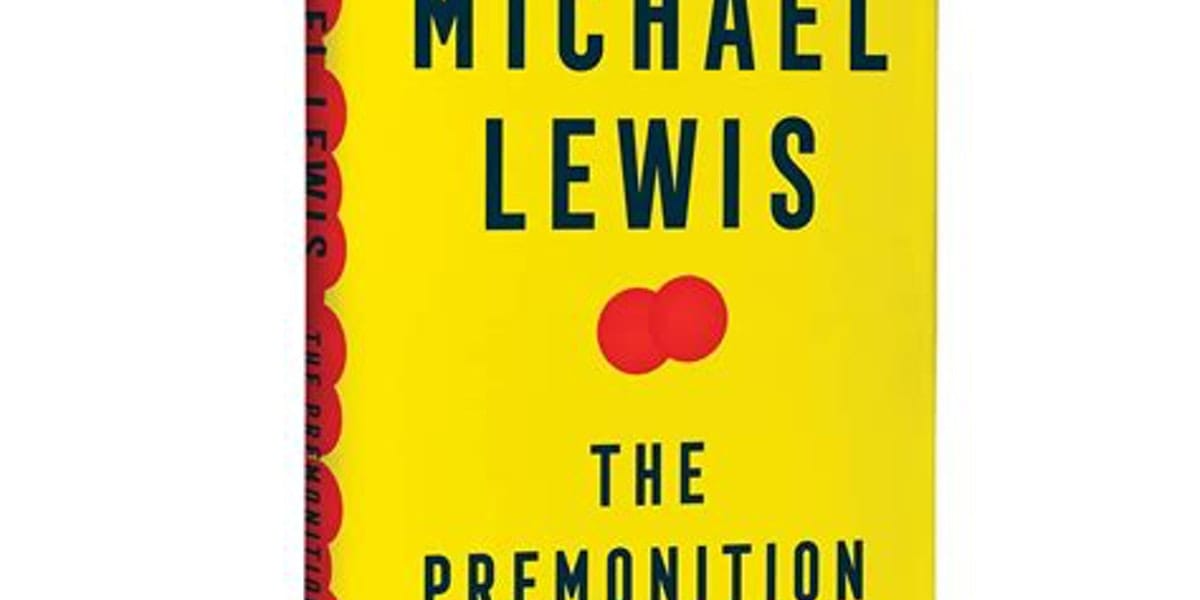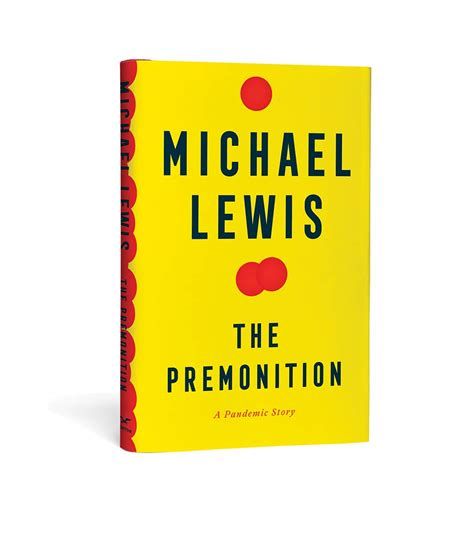Review: "The Premonition"
Michael Lewis' book reveals who really mattered in the US pandemic response

Who really turned the tide for the US pandemic response? Not the CDC. Not the FDA. Not the Trump Administration. Nope. It was a self-described redneck epidemiologist, an unassuming microbiologist from a liberal academic haven, and a pint-sized spitfire Churchill fan — at least according to Michael Lewis’ engrossing new book, “The Premonition: A Pandemic Story.”

The redneck epidemiologist in question is Carter Mecher, and the spitfire is Charity Dean, two names I hadn’t heard much before Lewis’ book burned them and their terrific stories into my mind. We’ll meet the unassuming microbiologist in a moment.
“The Premonition” is about how a few people with a very particular set of skills can make all the difference when the chips are down, and how bureaucracies of mediocrity, politics of mendacity, and misaligned incentives can bury them for too long while society suffers the consequences.
Lewis’ gifts as a storyteller are on full display. There are stories within stories within stories, and characters weave in and out perfectly, keeping the narrative moving at a brisk pace. The writing is bracing, and Lewis’ turn of phrase always no-nonsense and elegant.
The main story starts back in the early 2000s, when Dean and Mecher were dealing with other things — Dean with learning to use the vast powers she had as a local public health director in Santa Barbara to deal with tuberculosis outbreaks and mudslides, while Mecher was learning to quietly steer the Veterans Administration into safer and more efficient practices. Following their own independent tracks, they became influential in getting the US government — unexpectedly inspired by President George W. Bush — to get ahead of a possible pandemic response, and to embrace the once-discounted notion of social distancing as a powerful form of disease mitigation. The role of a high school science fair project in pushing this idea forward is fascinating, as is the related discovery that closing schools makes a huge difference in stopping the spread of communicable disease.
Dean and Mecher are a contrast in styles. Mecher’s main trait is that he disappears inside organizations, becoming a forgotten man while maintaining outsized influence inside and beyond whatever organization he’s in, by giving people insights and ideas without ego or a need for recognition. His ideas become theirs. Dean, on the other hand, is described by Lewis as:
She wasn’t some shrinking violet; she was a massive bouquet of red roses delivered with a singing telegram. She popped.
Dean is a Churchill fan, and used his writings to gain inspiration through a dark period of powerlessness, when she sensed the pandemic coming (hence, the premonition), but could do nothing about it. Contrasting Churchill to Chamberlain, the latter of whom wrote a white paper about appeasement rather than confronting Hitler, she wrote in the margins of one of Churchill’s books:
Don’t prepare a white paper when you need to be bombing the shit out of Germany!
Because neither Melcher nor Dean had any patience for office politics or keeping feathers unruffled, both are what one character describes as “L6”s, which he defined as:
The person buried under six layers of organization whose muzzled voice suddenly, urgently needed to be heard.
Another main protagonist in the central story — Joe DeRisi of UCSF (his lab has curated papers involved with the stories told in “The Premonition”) — describes such people as follows:
It’s often individuals who pick up the baton, and they’re not even doing it as part of their day job description. Scattered throughout those organizations there are these people, but they aren’t organized, trying to compensate for the deficiencies in the system.
There are system deficiencies galore to be found in Lewis’ narrative — a state Director of Public Health selected for diversity goals without experience in communicable disease containment or mitigation and devoted to optics and antagonistic to expertise that might threaten her (she later resigned, yet was elected to the National Academy of Medicine nonetheless); a renowned public health expert who may have plagiarized one of Dean’s works; and more tales of nasty and petty academic misbehavior.
Ultimately, it was an informal group — with Dean and Mecher contributing — who shared “Red Dawn” emails, and who started funding vaccine development months Operation Warp Speed. This group identified the reproduction rate of the virus, calculated its spread, helped zero in on the importance of superspreaders, and much more.
This was all done in the midst of terrible things being done by the Trump Administration at this time — dropping migrants in California cities in the middle of the night in an effort to stoke anti-immigrant anger, for instance, and Dean:
. . . was struck by how private American forces of mercy were straining to offset America’s public agents of cruelty.
The L6s saved a lot of lives, even in the face of ignorant, cruel, and fumbling federal actions.
Familiar items float past in the narrative — GenBank, CZI, NIH, NLM, NEJM, the Lancet. There is an anecdote about how when a CZI-funded lab sought to make free Covid tests available, the Zuckerberg San Francisco General Hospital couldn’t make their computers accept “free” as a price for a test.
Melcher notes how expertise became a free-for-all, with everyone trying to take sides and score points:
What puzzled [Melcher] maybe more than anything was how people who should have known better had downplayed the risk. Donald Trump was one thing; scientists were another. [Melcher] couldn’t get over that an actual medical professor at Stanford named John Ioannidis became a sensation on U.S. cable news in the spring of 2020 by claiming the virus posed no real threat. Ioannidis predicted that no more than ten thousand Americans would die. He condemned social distancing policies as a hysterical overreaction. That was all that those who wished to deny the reality needed to be able to say, Look, we have experts, too. To say: See, all the experts are fake.
But it’s the CDC that comes in for the major beating, both for its behavior and for its abysmal positioning relative to a health crisis — positioning that like many things changed with Reagan and has deteriorated since. This gap in the American public health system needs to be examined — reporting is not intervention, and the CDC was not up to the task when a pandemic struck. Instead, it hunkered down, more concerned for its reputation and bureaucratic needs than active in fighting the spread of disease. As Lewis writes:
But the CDC had demonstrated time and again to [Dean] that, once the shooting started, it didn’t know what to do. . . . A system was groping toward a solution, but the solution required someone in it to be brave, and the system didn’t reward bravery.
There are other ways the CDC is criticized, one of which is for its academic culture, and by extension its embrace of academic incentives:
[Dean] also knew that [the CDC] had turned itself into a black box: it sucked in data from others and seldom shared its own, except in the form of academic papers that brought glory to its authors. . . . Before she could call the CDC to complain, they called her. “They contacted me directly, trying to be friendly but actually wanting to scare me away from routing ‘their’ specimens to Joe,” she recalled. “By the end I was almost screaming. ‘YOU JUST WANT SPECIMENS FOR RESEARCH! I WANT THEM FOR ACTUAL FRONTLINE INVESTIGATIONS!!’” The people who ran the state declined to intervene. They didn’t want to get into a spat with the big commercial testing labs, or the CDC.
Going into “The Premonition,” I thought I’d kept up with the story of the US response to Covid-19. I was wrong. The book was for me an eye-opening and excellent read. Lewis is in peak form, the stories are compelling as hell, and the tale is timely, with vaccination rates giving the book a welcome whiff of hindsight. Don’t hesitate to buy and devour it.
Highly Recommend.
Note: Lewis’ 19-year-old daughter was tragically killed in a car accident last week, along with her 20-year-old boyfriend. Our condolences and heartfelt sympathies to the author and his family.